Jacob Charles Wilson reflects on the photojournalist’s landmark show, a harrowing snapshot of truth, tragedy and symbol
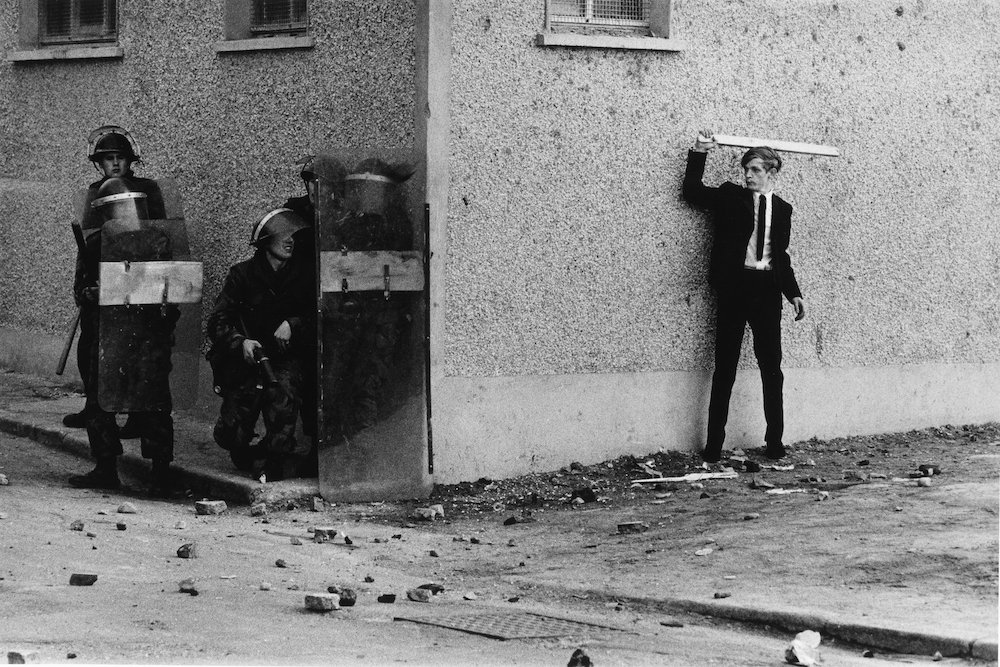
Several of the small, stark, black and white photographic prints at the Don McCullin show at Tate Britain appear almost to mirror the gallery visitors stood before them.
In one picture a crowd has gathered and is staring intently at something just out of the picture – just over our shoulder. People of all ages wear winter coats and expressions of concern across their faces. A pair of women link arms, one covers her mouth while the other gestures towards the scene out of sight. Others are walking away, they’ve seen enough. Several in the crowd are peering through binoculars to get a better look, while one young man carries a camera in his hands. The caption tells the story, it’s 1961 and these people are, as of today, West Berliners seeing, witnessing and capturing the division of a city and of a continent.
There’s a human desire to witness events – even horrific ones. But in the course of events it can often be difficult to determine what exactly is happening. Disasters do not always look like disasters when they appear directly in front of you – a personal tragedy, perhaps, but of world-historical significance? Don McCullin’s work, as a photojournalist, is to do precisely this, to invert vision and turn the personal tragedy into the political symbol and to condense and translate the complexities of history into scenes of personal tragedy. Since 1958 his photographs have illustrated newspapers and magazines across the world. His images have come to define the conflicts in Cambodia, Nigeria, Congo, and Vietnam. It is his image of the shell-shocked US Marine that has come to stand in for the hell of war itself.
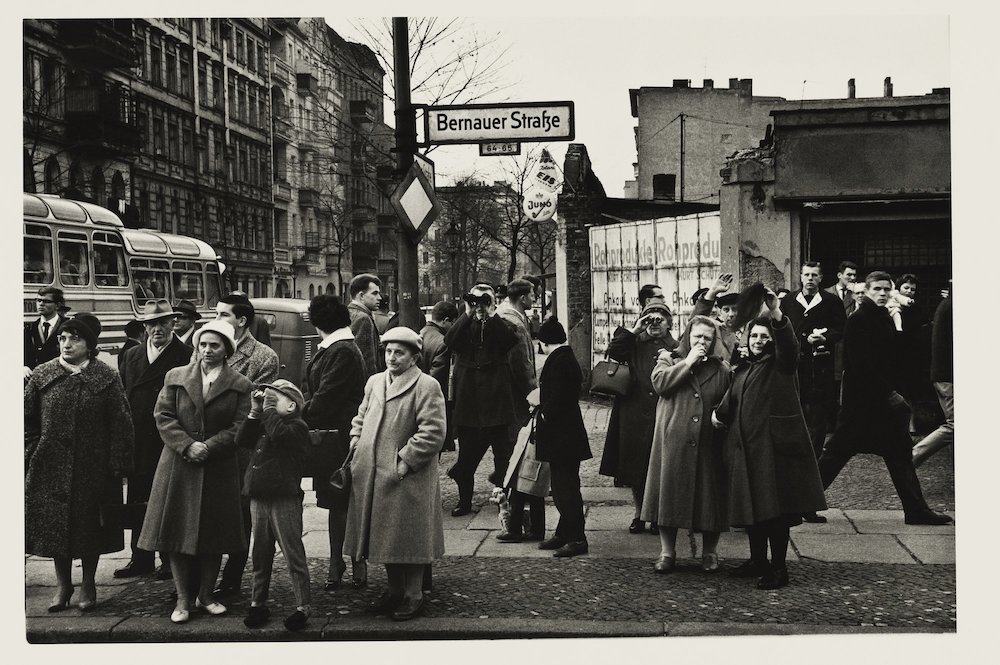
Despite this, McCullin disdains the epithets ‘artist’ and ‘war photographer’. But I find it difficult to describe him otherwise, the photographs taken throughout his career are artful, they display craft, sensitivity, and skill in use of the camera. One of the earliest photographs in the exhibition shows a portrait of a young gang-member in a Finsbury Park cafe. It was these early photographs of local gang-members, implicated in the murder of a policeman, that got McCullin his first job at The Observer. McCullin captures him in a shallow focus, the pure white of his face against the black depths of the cafe, his cigarette glows and a whisp of smoke wanders into the dark.
Later, when McCullin visited battlefields and refugee camps, he would show the same concern for dramatic, emotive composition and sharp tonal contrast. In portraits his style emphasises the texture of protruding veins and ribs and the sheen of polished steel and leather. In scenes of action the same techniques capture the chaotic frenzy of the wounded being rushed to field hospitals and men hurling grenades. In his macabre still lives it becomes difficult to distinguish mud from mulched flesh.
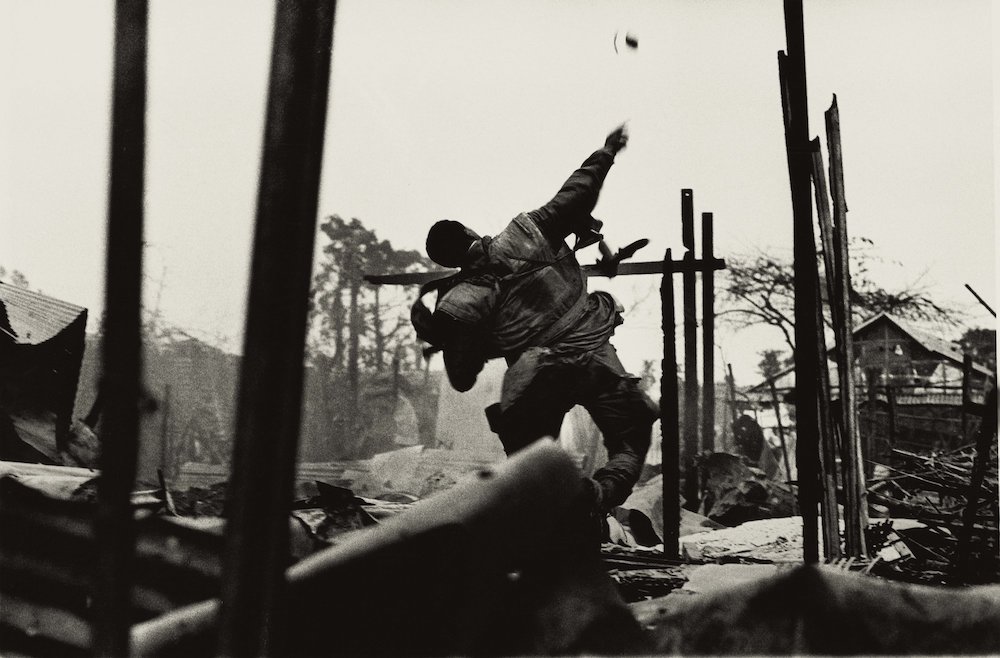
I hesitate, knowing that these scenes are of famine and conflict, to call them beautiful. McCullin also refrains from judging according to beauty. For him a good image is a truthful image, respect lies in presenting the truth, and truth in lack of interference on his behalf. He remarks, with some regret and some pride, that he has only taken a single contrived photograph on a battlefield, when he rearranged the looted possessions of a Việt Cộng soldier.
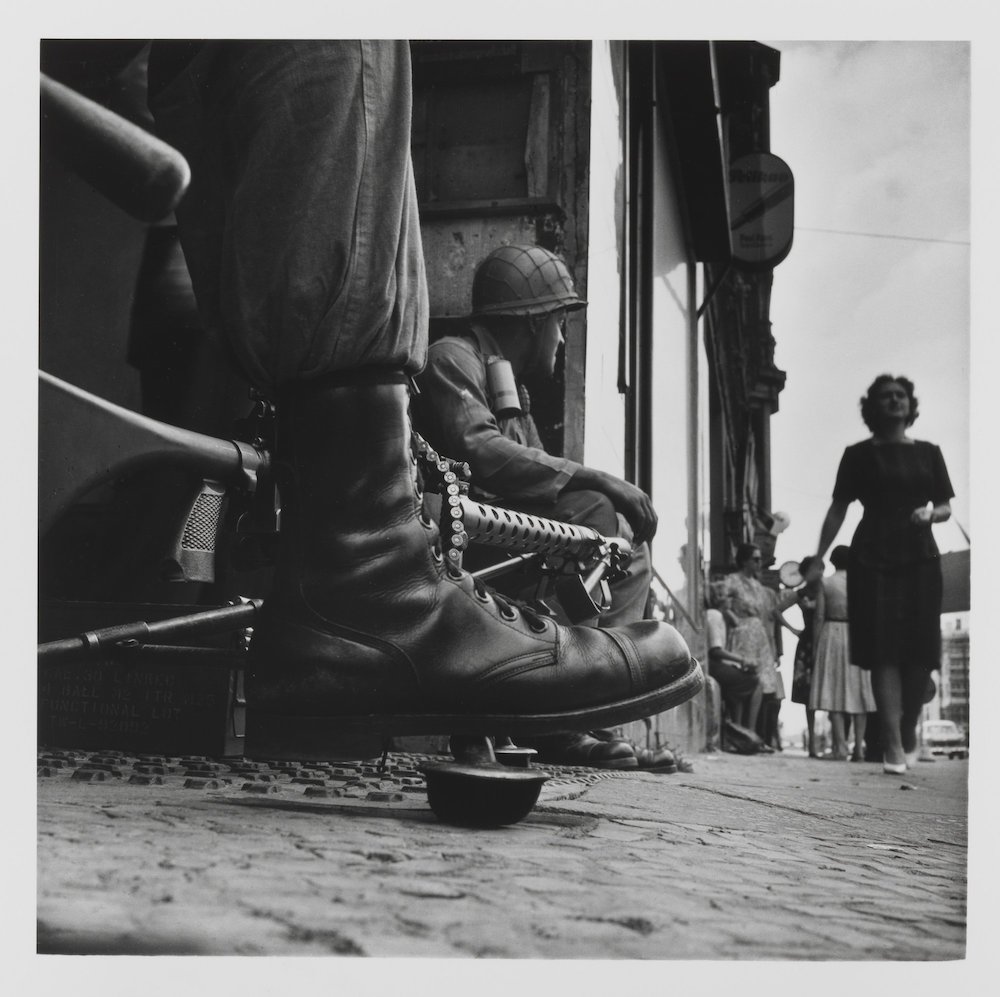
Here I don’t know if I can agree. The great myth of photography is of its direct access to truth. All photographs are contrived, they are all selective scenes of events, especially so once they’ve been developed, cropped, and selected by editors and curators for print and exhibition. At the same time cameras can tell better stories than people, they can slow down events and capture the details missed in the moment. Photographs and memories aren’t easily separated. And given almost no-one visiting the exhibition will have direct experience of these events, we all make do with what we have – a photographer’s vision of the 20th century.
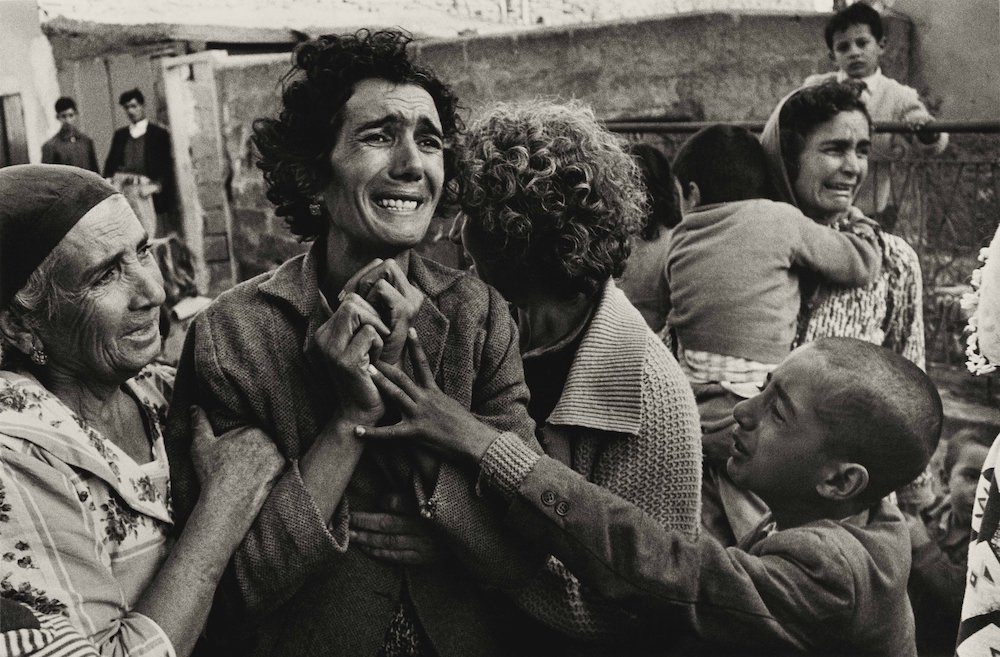
Perhaps this doubt is why the exhibition includes some of McCullin’s possessions from his time in Vietnam; a number of passports from his 16 trips there, a watch, a compass. But the most intriguing items are his military helmet, covered in scrawled nicknames and slogans, and his Nikon camera, shot through, leaving an inch sized bullet hole right by the viewfinder. McCullin has been ambushed, and only later realised how close he had come to being killed. He keeps the camera as a reminder of his 30 years of miraculous luck on the battlefield.

The bullet hole is a physical reminder that every object and image in the exhibition cannot be separated from the wider story McCullin tells of hardship and horror. It would be wrong, disrespectful even to do so. The breadth of McCullin’s work shows the scale of devastation in the 20th century, while specific places he visited speak of the atrocities of European colonialism and the US imperial strategy of communist ‘containment’. By the end, the flow of the photographs has induced such a profound sense of hopelessness as tragedy builds on tragedy, all I can think of are the images made in my own time. When will I look back and recognise what was always already apparent?